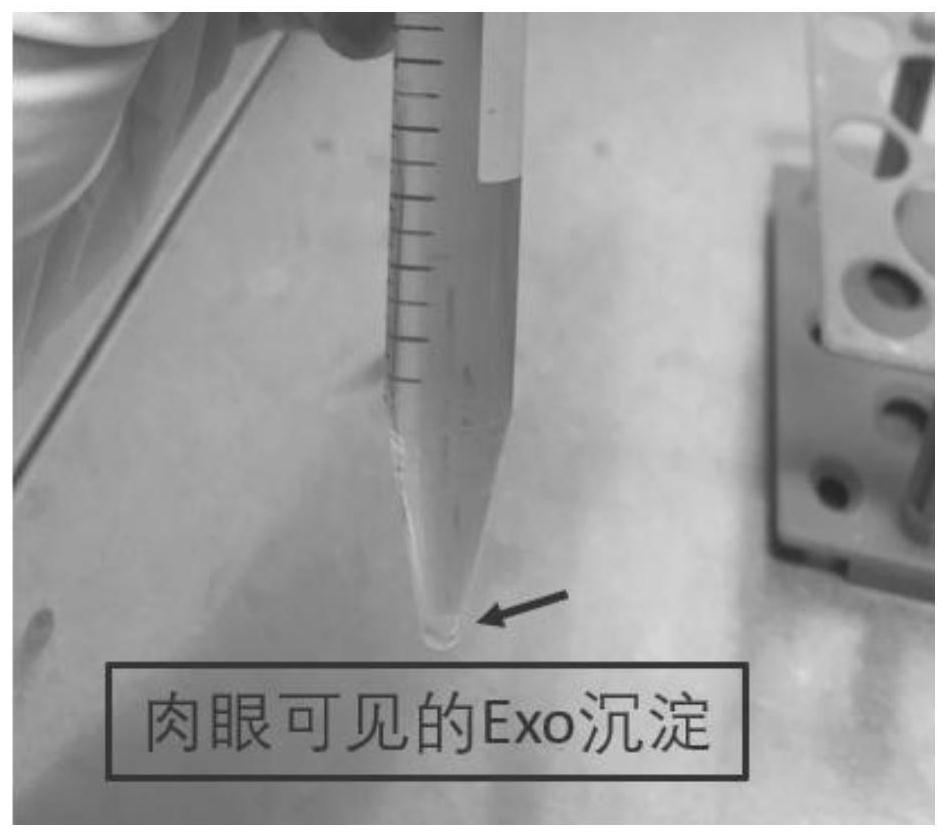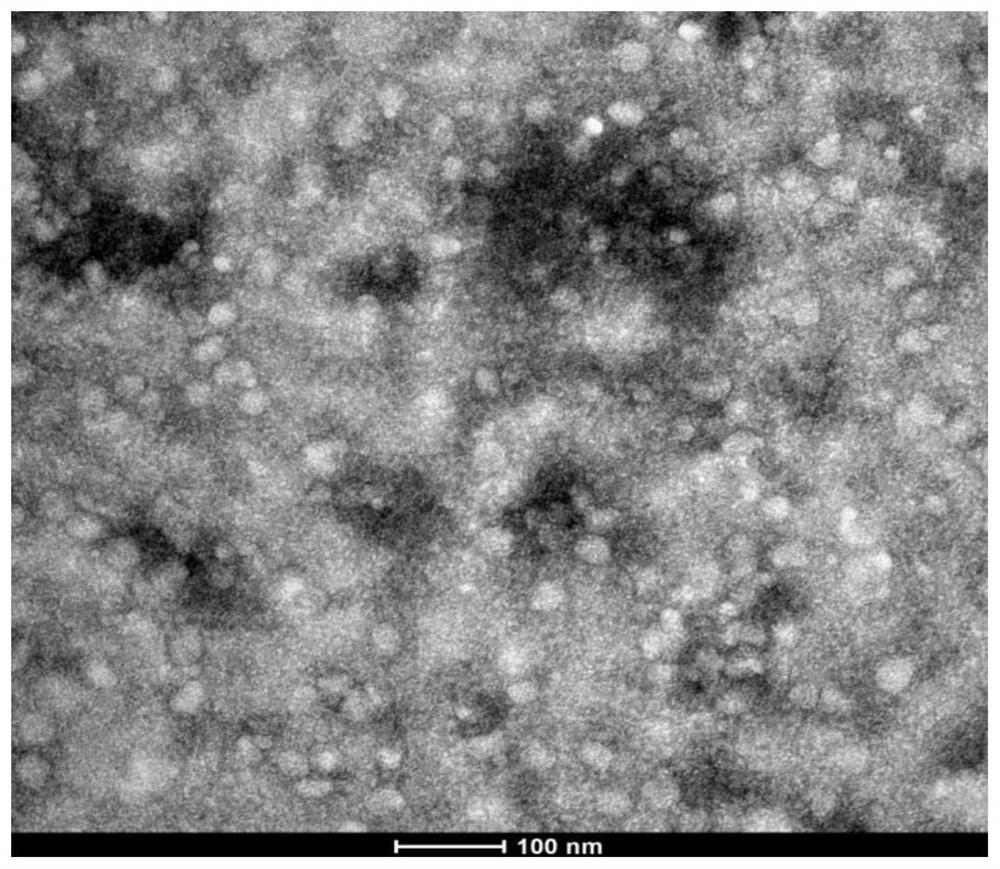Application of adipose-derived stem cell exosome in hair growth
An adipose stem cell and exosome technology, which is applied in the field of medical use of stem cell exosomes, can solve the problems of difficulty in completely separating non-vesicular entities and extracellular vesicle components, affecting the composition and functional differences of extracellular vesicles, etc. , to achieve increased number and dermal thickness, low immunogenicity, easy storage
- Summary
- Abstract
- Description
- Claims
- Application Information
AI Technical Summary
Problems solved by technology
Method used
Image
Examples
Embodiment 1
[0038] 1. Materials and methods
[0039] 1 material
[0040] 1.1 Animal source
[0041] SPF-grade C57BL / 6 male mice were used in the experiment, which were purchased from Shanghai Slack Experimental Animal Co., Ltd. and bred in the Experimental Animal Center of Tongji University. The experimental research ethics were approved by the Experimental Animal Center of Tongji University.
[0042] 1.2 Main experimental reagents / consumables
[0043] DMEM medium (Gibco, U.S., article number: C11995500BT), phosphate buffer solution (Phosphate BufferSolution, PBS, Gibco, U.S.), 0.05% trypsin solution (Trypsin-EDTA, Gibco, U.S.), FetalBlood Serum (FBS, Gibco, U.S.), USA, Cat. No.: 10099141C), type I collagenase (Worthington, USA). Ultra-15 Centrifugal Filter Unit (Millipore, USA, Cat. No. UFC910008), ExoQuick-TC (Cat. No. EXOTC10A-1, SBI Biosciences, SBI, America), Anti-CD9 Antibody (abcam, UK), Anti-CD81 Antibody (abcam, UK ), Anti-TSG101 antibody (abcam, UK).
[0044] 2 methods
[...
Embodiment 2
[0068] 1. Materials and methods
[0069] 1 material
[0070] 1.1 Animal source
[0071] SPF-grade C57BL / 6 male mice and SPF-grade SD male rats were used in the experiment, both purchased from Shanghai Slack Experimental Animal Co., Ltd. and bred in the Experimental Animal Center of Tongji University. Experimental research ethics were approved by the Experimental Animal Center of Tongji University.
[0072] 1.2 Main experimental reagents / consumables
[0073] DMEM medium (Gibco, U.S., article number: C11995500BT), phosphate buffer solution (Phosphate BufferSolution, PBS, Gibco, U.S.), 0.05% trypsin solution (Trypsin-EDTA, Gibco, U.S.), FetalBlood Serum (FBS, Gibco, U.S.), USA, product number: 10099141C), type I collagenase (Worthington, USA), CCK8 reagent (Cell Counting Kit-8, Dojindo, Japan).
[0074] 2 methods
[0075] 2.1 Exosomes from adipose-derived stem cells promote the proliferation of hair follicles and dermal papilla
[0076] The 3rd-5th generation rat hair follic...
Embodiment 3
[0085] 1. Materials and methods
[0086] 1 material
[0087] 1.1 Animal source
[0088] SPF-grade C57BL / 6 male mice and SPF-grade SD male rats were used in the experiment, both purchased from Shanghai Slack Experimental Animal Co., Ltd. and bred in the Experimental Animal Center of Tongji University. Experimental research ethics were approved by the Experimental Animal Center of Tongji University.
[0089] 1.2 Main experimental reagents / consumables
[0090] DMEM medium (Gibco, U.S., article number: C11995500BT), phosphate buffer solution (Phosphate BufferSolution, PBS, Gibco, U.S.), 0.05% trypsin solution (Trypsin-EDTA, Gibco, U.S.), FetalBlood Serum (FBS, Gibco, U.S.), USA, Cat. No.: 10099141C), type I collagenase (Worthington, USA). Ultra-15 Centrifugal Filter Unit (Millipore, USA, article number UFC910008), ExoQuick-TC (article number EXOTC10A-1, SBI Biosciences, SBI, the United States). CCK8 reagent (Cell Counting Kit-8, Dojindo, Japan).
[0091] 2 methods
[0092] ...
PUM
| Property | Measurement | Unit |
|---|---|---|
| diameter | aaaaa | aaaaa |
Abstract
Description
Claims
Application Information
 Login to View More
Login to View More - R&D
- Intellectual Property
- Life Sciences
- Materials
- Tech Scout
- Unparalleled Data Quality
- Higher Quality Content
- 60% Fewer Hallucinations
Browse by: Latest US Patents, China's latest patents, Technical Efficacy Thesaurus, Application Domain, Technology Topic, Popular Technical Reports.
© 2025 PatSnap. All rights reserved.Legal|Privacy policy|Modern Slavery Act Transparency Statement|Sitemap|About US| Contact US: help@patsnap.com



